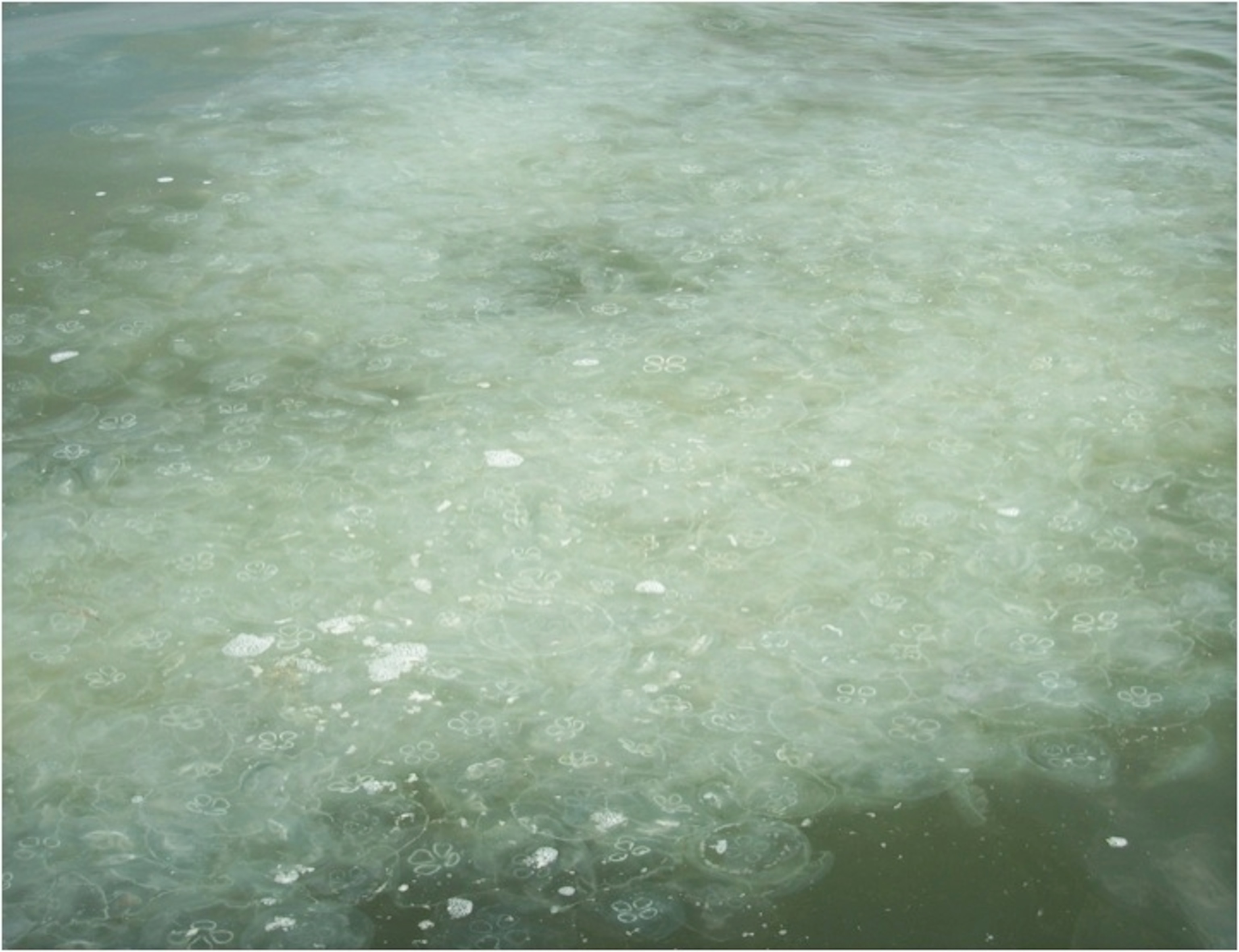
Jellyfish shift ocean food webs by feeding bacteria with mucus and excrement
Despite its name, the Gulf of Mexico’s Dead Zone is full with life. This region stretches over 22,000 square kilometres, an area the size of Israel. Its waters are choked by a combination of fertiliser, sewage and industrial run-offs, flowing down from the businesses that line the Mississippi. These pollutants feed large blooms of algae that ultimately rob the water of oxygen, depriving it of the ability to support fish and other typical residents. Instead, the Dead Zone has become the dominion of jellyfish.
Jellyfish congregate here in their thousands. Locals like moon jellies and sea nettles are joined by foreign travellers like the Australian spotted jellyfish. These gelatinous swarms stretch for miles, covering the ocean in a web of pulsating umbrellas and stinging tentacles. At their densest, you could scoop up a hundred jellies within a single cubic metre of water. They shut down beaches, fisheries, industries and ecosystems.
The reasons for these swarms are unclear. By overfishing, we could have removed the jellies’ main competition for food. By sinking man-made debris like vehicles and rigs, we could have created habitats for their larvae. By raising the temperature of the oceans and pumping them with pollutants, we could have created warm, oxygen-poor waters that only they can thrive in.
The jellyfish blooms are a natural phenomenon but marine biologists suspect that they are becoming increasingly common. Reports are constantly flooding in of unusual thick and large swarms, not just in the Gulf of Mexico, but all over the world from the Mediterranean to the Japanese coast. The worry is that we are witnessing a transition from an ocean full of scales, shells and flippers to one that’s ruled by jelly.
